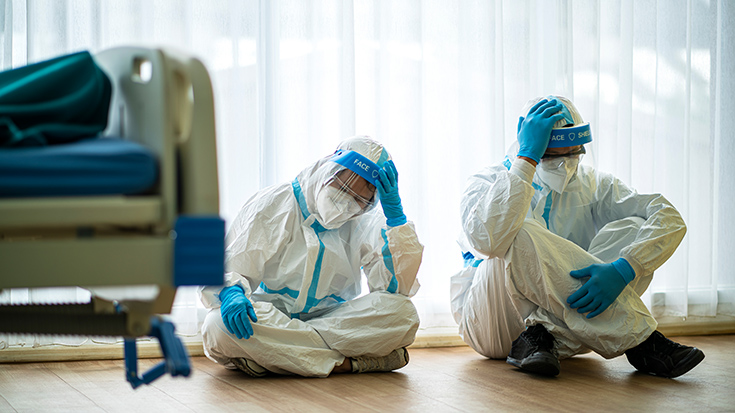
Menthol Cigarette Ban Could Lead More Than a Million to Quit
The ban on menthol cigarettes proposed by the FDA could cause more than 1.3 million people to quit smoking. A study conducted by Canada and the U.S. researchers determined this to be a key finding. They looked at data on people who participated in surveys before and after Canada banned menthol cigarettes in 2017 and then applied that data to U.S. statistics on smokers.
Results from Canada showed people who smoked menthol cigarettes quit at a rate of 22.3% after the ban compared to 15% for those who smoked regular cigarettes. The authors note that the difference of 7.3% is highly statistically significant.
When the effect that the Canadian ban had on quitting was applied to U.S. statistics on menthol smokers, the researchers found that a similar ban in the U.S. could increase the number of people quitting by 1,337,988. Moreover, the impact would likely be higher for black smokers since 80% of those smokers currently favor menthol cigarettes vs. 35% of smokers overall.
“These findings provide the foundation for the U.S. and other countries considering menthol cigarette bans to estimate the possible impact of such bans on reducing smoking,” said Michael O. Chaiton, principal investigator of the Ontario Menthol Ban Study.
The research appeared in Tobacco Control. Read More
Patients Screened for Lung Cancer Don’t Always Get Timely Follow Up Care
CT screening in people considered at high risk for lung cancer can save lives. But according to researchers from Washington State, many of those who get screened do not get recommended follow-up care in a timely fashion.
The study looked at patients enrolled in a Seattle-based CT lung cancer screening program. All underwent baseline or annual screening between 2012 and January 2021 and were classified from low to high risk using the Lung-RADS assessment tool established by the American College of Radiology. Follow-up care consisted of a second CT scan, other appropriate imaging, and/or specialty consultation or procedure.
A follow-up delay was defined as more than 30 days past the recommended time for patients at lower risk and 30 days for those deemed to be at the highest risk. Overall, 397 patients with 464 exams had high-risk findings, and among that group, 59, or 15%, were ultimately diagnosed with lung cancer.
The median delay time was 91 days, although those considered at higher risk had shorter delay times. Longer delays were seen in current smokers than in former smokers.
“Interventions are needed at both the provider and patient levels to ensure that high-risk patients receive adequate follow-up,” said study author Alwiya Ahmed, MD, MPH, internal medicine resident at the University of Washington School of Medicine and physician-scientist at the Seattle Cancer Care Alliance and Fred Hutchinson Cancer Research Center.
The study was presented at ATS 2022. Read More
USPSTF Recommends Against COPD Screening for Those Without Symptoms
The U.S. Preventive Services Task Force (USPSTF) has issued a final recommendation, stating that people without COPD symptoms should not be routinely screened for the condition.
“COPD is a serious condition that affects the health of many adults in the United States, but research continues to show it is not beneficial to screen people without symptoms for COPD,” said Task Force member Katrina Donahue, MD, MPH. “The USPSTF does not recommend screening for COPD in people who do not have signs or symptoms of the disease because it does not improve their overall health.”
The Task Force emphasizes that screening should still be done for people with signs or symptoms of COPD. Screening should also be completed for those who were previously diagnosed with COPD, and those considered at very high risk for COPD. For example, an individual with an inherited disorder that can cause the disease or who was exposed to certain toxins on the job would be considered high risk.
“While screening for COPD in people without symptoms is not recommended, health care professionals can still help prevent their patients from getting COPD,” said Task Force Chair Carol Mangione, MD, MSPH. “Most cases of COPD are caused by smoking, so it’s essential health care professionals support their patients, including young people, in not starting to smoke and helping those who do smoke quit.”
The recommendation was published by JAMA and is available on the USPSTF website. Read More
Anxiety Levels Differed During the Pandemic
Anxiety levels for people dealing with asthma and food allergies diverged during the pandemic, report researchers publishing in the Annals of Allergy, Asthma and Immunology.
In one study, investigators who surveyed 873 adults with asthma found that nearly 48% had a high anxiety score. In addition, nearly 57% reported having an asthma attack, and 43% reported uncontrolled asthma. People with higher scores were more likely to report uncontrolled asthma during COVID-19.
Another study that examined 293 questionnaires completed by the parents of Canadian children with food allergies in May and June of 2020, when most kids were doing virtual school and many in-person activities had shut down, found the opposite effect.
While anxiety related to COVID-19 was high, at 67%, anxiety related to their child’s food allergies actually decreased in 42% of the respondents and remained the same in 30%. One respondent put it this way: “It’s been easier during quarantine because we are not going out to eat, not going to parties . . . not going to school or anywhere that used to cause anxiety about potential accidental allergen exposure.” Read More
Understanding Hypoxia’s Link to Inflammation
Researchers from the La Jolla Institute for Immunology shed some light on the role of hypoxia in causing the inflammation that figures into diseases like asthma and COPD.
The scientists used a mouse model to mimic the signals of hypoxia in the airway’s epithelial cells, finding that combining the hypoxia signals with inflammatory signals stimulated the innate immunity and an immune cell type called ILC2. ILC2 makes cytokines, which alert other immune cells to react to a pathogen. But when they overreact to harmless environmental allergens, they churn out cytokines that drive mucus production and inflammation in the lungs, leading to hypoxia.
The new research found that ILC2s respond to hypoxia, adding to the lung damage already underway during an asthma attack and leading to even more inflammation.
How do epithelial cells activate ILC2s during hypoxia? The investigators believe the culprit is adrenomedullin (ADM), which plays a role in helping blood vessels dilate. They found ADM is also produced by human epithelial cells exposed to hypoxia.
The investigators believe ADM or its receptor could be a target for new treatments aimed at inflammatory and allergic lung diseases, but note that caution is necessary. They don’t want to dampen the harmful immune response so much that the body is left vulnerable to infections.
The study was published by the Journal of Experimental Medicine. Read More
COPD Patients Have More Coronary Disease
A recent study out of Norway confirms what many registries have suggested. COPD patients are more likely to suffer from coronary disease.
The investigators compared CT angiography, emphysema scores, lung function measurements, and other parameters in 347 COPD patients and 429 controls, with results showing COPD patients had more coronary disease than controls, even when other factors like smoking habits, gender, and age were taken into account.
The increase was independent of COPD disease severity as well.
The authors believe their study points to the importance of early screening for coronary disease in patients with COPD. The study was published by PLOS One. Read More
Email newsroom@aarc.org with questions or comments, we’d love to hear from you.















